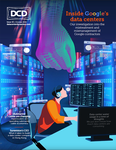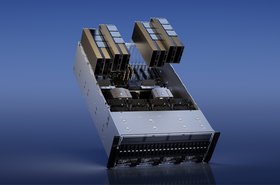The global pandemic has spurred a rapid growth in demand for data centers, thanks to the acceleration of digitalization in the workplace and the home.
In 2021, businesses began gearing up for the Next Normal in earnest, embedding remote and hybrid working and new digital routes to market into operating models. Manufacturers and the industrial sector also continued to ramp up the pursuit of Industry 4.0 technologies in a bid to further streamline production and increase supply chain agility.
Meanwhile, a growing number of consumers began to take advantage of smart connected IoT devices and services in the home. As a result, the global smart home market is predicted to hit $138.9 billion by 2026, with digital health and assisted home living services set to grow considerably in the coming decade.
As DC providers race to keep up with the pace of change, what are the top trends that will impact the industry in 2022?
Automation and self-service
The pandemic has triggered a seismic change in what B2B and B2C customers expect from DC providers, who will have little choice but to adapt their services and business models to suit these new demands.
In 2022, expect more services to be driven and shaped by end users looking to get things done on their own terms and timescales. All of which will further fuel the momentum of growth in automated and self-service offerings. Indeed, Gartner forecasts that by 2025, 60 percent of organizations will be using infrastructure automation tools.
In response, DC operators should strive to facilitate enhanced customer-centricity by automating and streamlining their services to deliver the flexibility and transparency today’s customers now expect. That includes evaluating how they optimize controlled infrastructure environments where customers can self-serve through automated applications.
With customer experience now enshrined as a key differentiator when choosing a technology, service provider and channel partner, this is set to become a pervasive trend into next year.
The drive to sustainability
As we move into 2022, the push for more energy-efficient innovation will continue to be a key strategic impetus for the technology sector. For the data center industry, this poses a notable and ongoing challenge as data centers do not naturally lend themselves to being environmentally friendly.
Requiring large amounts of space and equipment, data centers also consume copious amounts of power and water. Little wonder that data center sustainability is now a top issue when customers come to purchase cloud and data center services.
In January this year, a large number of European data center and cloud operators signed a commitment to become carbon neutral by 2030. Backed by 17 industry bodies, the Climate Neutral Data center Pact set out targets for efficiency and the use of green energy and the introduction of ‘circular economy’ practices.
All of which means that in 2022, data center operators will need to go beyond delivering greater transparency about their environmental impact – and take action to introduce measurable improvements in their energy efficiency.
Some of the key measures DC operators can take to enhance environmental performance include replacing inefficient legacy infrastructure; retiring redundant ‘zombie’ servers to reduce unnecessary energy consumption and cost; switching to on-demand energy models; and the utilization of tools that make it possible to reclaim and redistribute unused power to other locations in the DC facility.
The shift to hybrid cloud will gain pace
The past 18 months have seen organizations turn to massive so called ‘hyperscalers’ such as AWS, Microsoft Azure and Google Cloud to maintain business operations in the age of remote work. As companies re-evaluate their emergency infrastructure plans, many are undertaking a rethink when it comes to optimising and rightsizing their cloud resources and choosing to adopt a hybrid cloud approach. And they’re right to do so.
By relying only on the public cloud, enterprises risk spending more than they need to. Plus, they’re finding it difficult to scale services without undue cost. By partnering with an IaaS provider and limiting public cloud usage to supporting peak loads and less traffic-intensive applications, they’re able to reduce latency times and cut costs in the long run.
In 2022, expect more companies to become increasingly savvy about availability, uptime promises and usage costs as they evaluate which infrastructure models truly represent a best fit for their enterprise goals moving forward.
Good CIOs are all too aware that cloud management optimization isn’t just a one-time process and will regularly revisit and review their setup to ensure maximum efficiency. Indeed, a growing number now recognize that the great benefit of the hybrid world is that it’s possible to continuously move, change and redeploy workloads to best suit business needs during seasonal peaks and troughs, growth and reduction times, or to support additional or new projects on the horizon.
Providing an efficient, tailored and cost-effective option for addressing the lack of customization many businesses experience when they try to scale their infrastructure, services, applications and data within a public cloud environment, 2022 will be the year in which more and more customers adopt a ‘best of both worlds’ approach and initiate a hybrid cloud strategy in a bid to better manage both cloud spending and performance.





